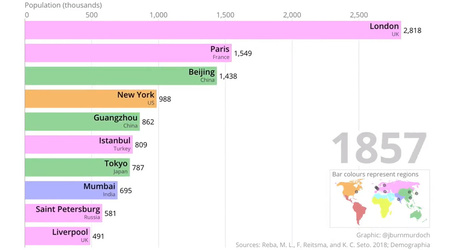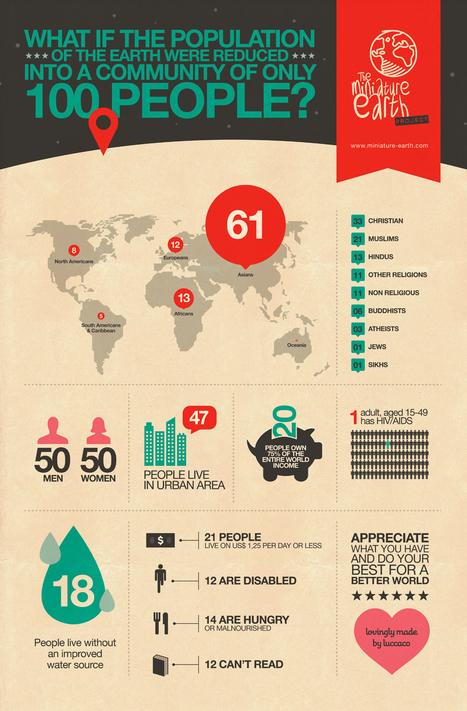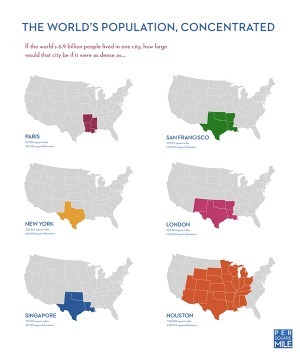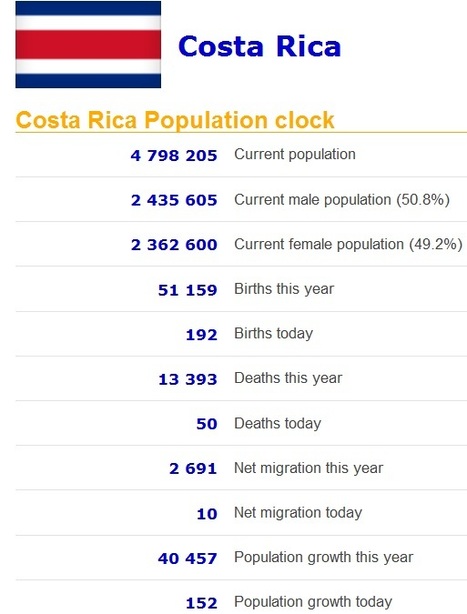How fast are countries in Europe and the Americas aging? These colorful animations show how the median age is projected to change up until the year 2060.
Get Started for FREE
Sign up with Facebook Sign up with X
I don't have a Facebook or a X account
 Your new post is loading... Your new post is loading...
 Your new post is loading... Your new post is loading...
MissPatel's curator insight,
December 16, 2014 3:24 AM
A little overview of Malthus's theory on population.

jada_chace's curator insight,
September 10, 2014 9:47 AM
Refugees are found in a large percent of Earth’s surface. Some people chose to migrate, while others are forced. Some leave their home in order to get away from their country, for example due to a war. Many flee to nearby countries and are afraid to return to their hometown because they are frightened of what might happen if they go back. Another reason many refugees leave their country is due to environmental problems and the people cannot afford to live in that country.
Elle Reagan's curator insight,
October 17, 2014 1:31 PM
I felt like this article was very relevant to our Unit 2, Population. We have talked about refugees and migration in a great deal and I thought this map was a good visual. I also liked the information it provided about what refugees really are and that they are really a part of the world migration pattern.
Katelyn Sesny's curator insight,
October 31, 2014 12:31 PM
Refugees are often thought of as those with the "refugee problems" they face, the problems they create and the constant struggle they possess of never being able to go home for the political/religious dispute in their homeland. However this articles goes into depth of the definition of a refugee and furthermore focuses on the topic of "environmental refugees' who are forced to get up and leave their land due to soul degradation, flooding, etc. - UNIT 2
Samuel D'Amore's curator insight,
December 17, 2014 5:03 PM
The increase in global population is definitely a hot button topic in today's world. Many wonder if the planet will be able to really sustain so many new people, and if it can truly sustain our current number of humans. This video does a good job of addressing these problems and presenting how things will likely come to be. Our planet is capable of producing great amounts of food and material the real hurdle comes down to how well nations will cooperate. Unfortunately politics and money seem to be the real snagging point in the distribution of aid and resources to many. 
Kristin Mandsager San Bento's curator insight,
May 1, 2015 4:25 PM
The rapid growth occurring is staggering. I believe we do need to start thinking about the future in generations. Where will we be in 50-100 years and where do we need to be. So basically you need to start thinking about your childrens' childrens' future. We need to make changes to sustain the increase in population.
Erin McLeod's curator insight,
August 6, 2015 10:55 PM
Geography - Human Population in senior school

Miles Gibson's curator insight,
December 18, 2014 11:15 AM
Unit 2 Population and Migration This diagram is an 18 slide powerpoint explaining the uses of, how to analyze, and what a population pyramid shows. This is also in a childish language and is very easy to understand making it an easy thing to use and visualize. It shows how pyramids show fertility rates migration and workforce. This diagram powerpoint relates to unit 2 because it shows population pyramids with population and migration data on them referencing to the units core concepts. This delves deep into the understanding of the uses of population diagrams overall and their effects on society's parts, It is overall a major part of unit 2. |

Meagan Harpin's curator insight,
September 28, 2013 11:44 PM
In the last 10 years about 1.25 million russians have emigrated out of Russia, but the way they do it is interesting. When they leave they dont sell their houses, or aparments, or cars they simply lock their doors and quietly slip away to the airports at night. The reasons for leaving are different thought, some are leaving because the prime minister is expected to return while some are leaving because of the awful econonmy. Either way the massive amounts of emigration is leading to a higher death rate then birth rate overall.
Nathan Chasse's curator insight,
March 1, 2014 1:23 AM
This article from a couple years ago is about Russian emigration. A large number of Russians were leaving the country for better economic opportunity. Some cite the overbearing rule of Putin, but the pay in other countries is just better than what Russia can offer. This was particularly the case for the more educated, another instance of "brain drain" hurting a nation which is already in trouble. 
Jess Deady's curator insight,
May 1, 2014 12:00 PM
Migration occurs for many reasons. People move from country to country every day. Leaving Russia was this families choice and moving to Israel can have an impact on them greater than if they were to stay in Russia.

Scott D.Warner, PLS's comment,
August 3, 2013 5:03 PM
Population density dependent malfunctions in societies include crime, disease, and even war.

Riley Tuggle's curator insight,
September 10, 2014 9:51 AM
I believe India has more men than women because sometimes when women can't have a son for their first or second child, the men would beat the women to death, or in some instances women are captured and sold for wives, and they may commit suicide they are so depressed. Also, some pregnant women find out their baby is a girl, they would aport or abandon her because sons are apparently more important and successful because they would stay home and take care of their parents when they are elderly and they would carry on the families name. -rt
MissPatel's curator insight,
December 16, 2014 3:22 AM
This is fantastic - have a look at various countries and their 'rate' of growth |



















